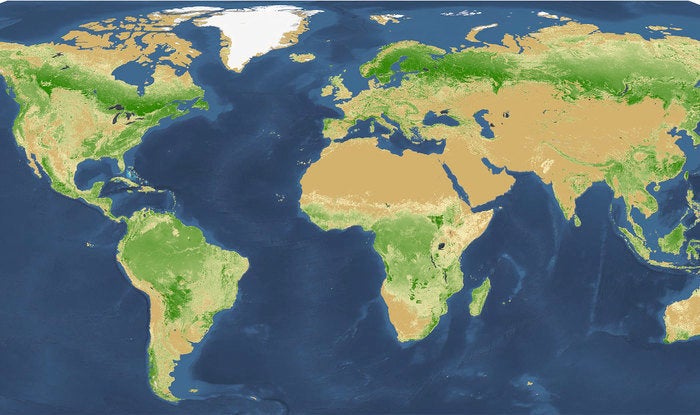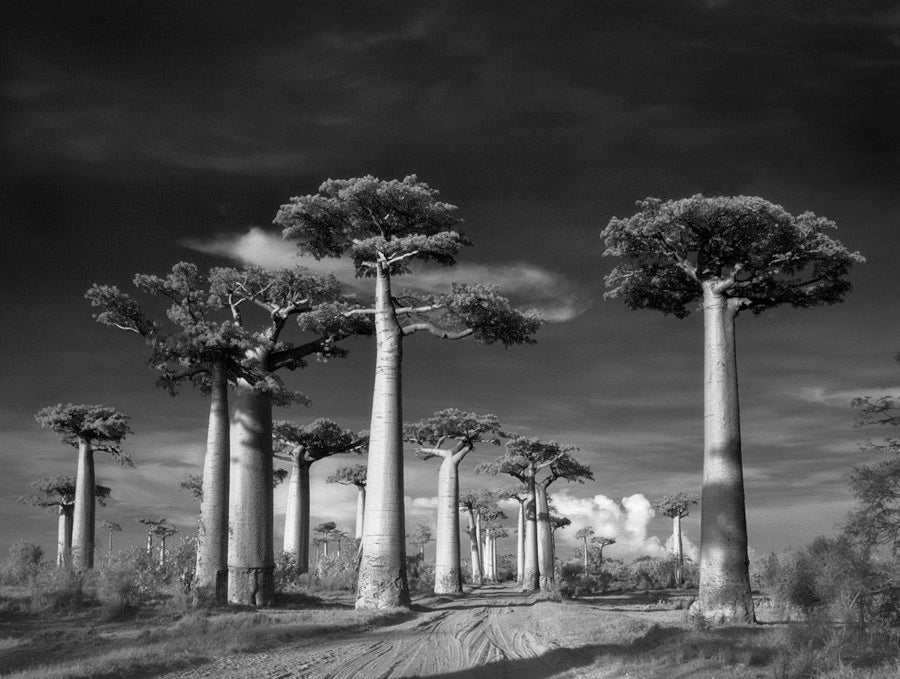If you're having trouble seeing the forest for the trees, maybe it's because there are so many trees out there. A new study puts the number at 3.04 trillion trees -- a number that's much, much higher than what scientists had expected.
"We were astonished, simply because this is such an astronomical number," Dr. Tom Crowther, a post-doctoral fellow at Yale University's School of Forestry & Environmental Studies and the leader of the international team of scientists who did the study, told The Huffington Post in an email. "The previous estimate, which was solely based on satellite information, was approximately 400 billion, so we were surprised to find that our final number had 12 zeroes after it. The scale of this number really puts a lot of things in context."
As we all know, trees add oxygen to the atmosphere and thus help produce the air we breathe. But if you think the existence of so many trees means we needn't worry so much about pollution, get this: the study also showed that 15 billion trees are cut down every year and that the total number of trees has dropped by around 46 percent since the dawn of civilization. Yikes.
(Story continues below image.)

A map of the world's tree population, according to new research.
For the study, the researchers used satellite data and environmental data as well as so-called "forest inventories," tree tallies created by humans actually counting trees.
But what exactly counts as a tree? The researchers defined "tree" as a woody plant that, at breast height, has a stem that's at least 10 centimeters in diameter, The Washington Post reported.
The researchers found that the highest densities of trees are located in the boreal forests in the sub-arctic regions of Russia, Scandinavia, and North America. The largest forested areas, according to the researchers, are in the tropics. These areas are home to about 43 percent of the world’s trees.
"That is truly an amazing amount of field data," Dr. Marc Simard, a senior scientist in the Radar Science and Engineering section of NASA's Jet Propulsion Laboratory who was not involved with the study, told the Los Angeles Times. "And it enables the discovery of relationships between tree density, remote sensing measurements and environmental factors."
“Trees are some of the most prominent organisms on Earth and they characterize every terrestrial ecosystem that they are found in.”
The researchers said theirs is the most comprehensive assessment of tree populations yet, and that it can help bring a better understanding of how humans affect the global environment and biodiversity.
"The information that we provide is important because it provides meaningful numbers that can be used by scientists, policy makers and environmental practitioners in order to make decisions about the world," Crowther said in the email. "Trees are some of the most prominent organisms on Earth and they characterize every terrestrial ecosystem that they are found in. Understanding their distribution is important for understanding the global ecosystem."
The study was published online in the journal Nature on September 2, 2015.

